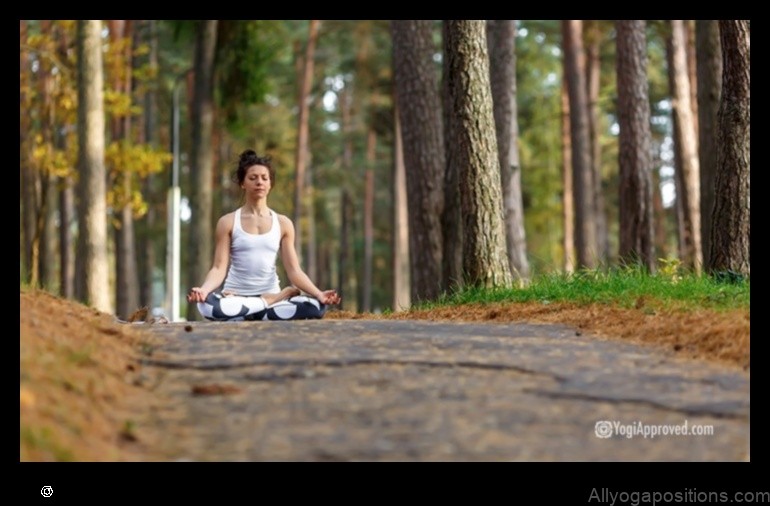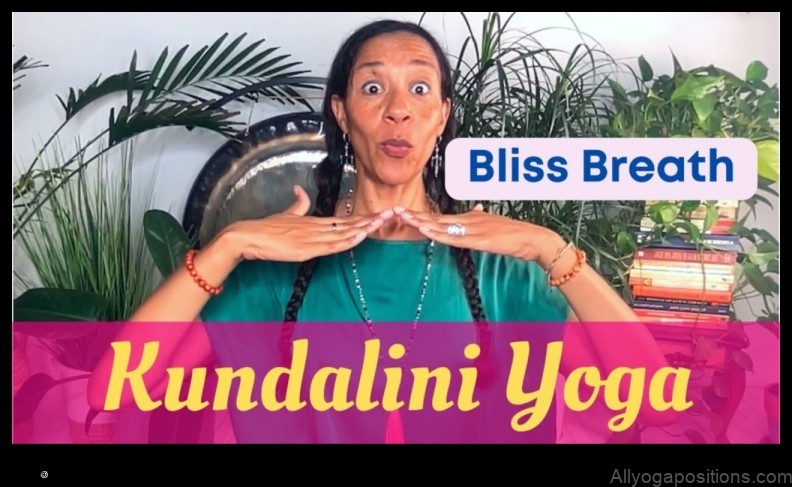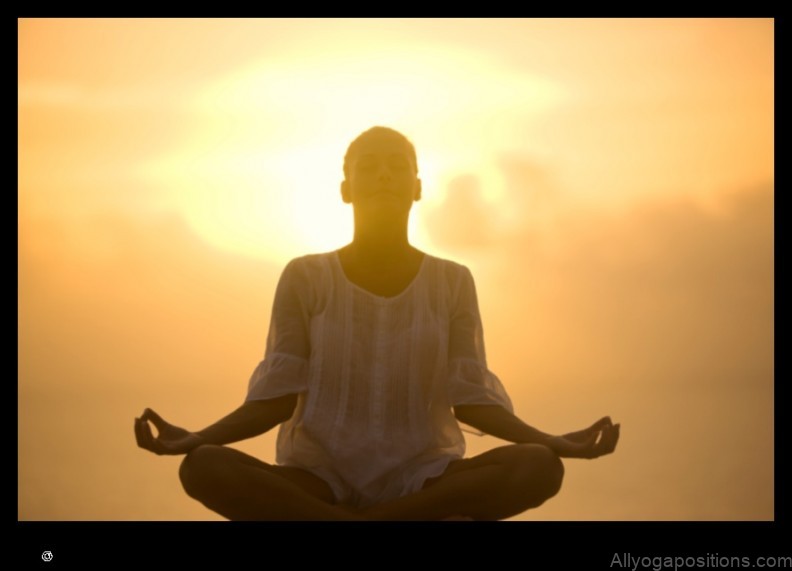
Blissful Breath: Yoga for Pranayama Bliss
Pranayama is a type of yoga breathing exercise that has been practiced for centuries in India. It is believed to promote relaxation, improve focus, and reduce stress. There are many different types of pranayama, each with its own unique benefits.
In this article, we will discuss the basics of pranayama, including how to practice it correctly, what benefits it can provide, and how it can be incorporated into your yoga practice.

Introduction to Pranayama
Pranayama is a Sanskrit word that means “extension of life force.” In yoga, prana is the life force that flows through all living things. Pranayama is a practice that helps us to control and direct this life force.
Pranayama is often practiced in conjunction with yoga poses. However, it can also be practiced on its own. There are many different ways to practice pranayama, but all of them involve controlling the breath in some way.
Benefits of Pranayama
Pranayama has been shown to have a number of benefits, including:
- Reduced stress and anxiety
- Improved focus and concentration
- Increased energy levels
- Improved sleep quality
- Reduced pain
- Improved digestion
- Enhanced immunity

How to Practice Pranayama
Pranayama is a simple practice that can be learned by anyone. However, it is important to learn the proper techniques from a qualified teacher.
To practice pranayama, you will need to find a comfortable seated position. You can sit on a chair, a yoga mat, or even the floor. Once you are seated, close your eyes and focus on your breath.
Inhale slowly and deeply through your nose. As you inhale, fill your lungs completely. Exhale slowly and completely through your nose.
Repeat this process for several minutes, or for as long as you like. As you practice, try to focus on your breath and let go of any distractions.
Common Mistakes in Pranayama
There are a few common mistakes that people make when practicing pranayama. These include:
- Breathing too fast or too slow
- Holding your breath
- Tightening your muscles
- Trying to force your breath
It is important to avoid these mistakes in order to get the most benefit from pranayama. If you are unsure of how to practice pranayama correctly, it is best to learn from a qualified teacher.
Contraindications for Pranayama
Pranayama is generally safe for most people. However, there are a few contraindications for pranayama, including:
- Pregnancy
- High blood pressure
- Heart disease
- Asthma
- Sinus problems
If you have any of these conditions, it is important to talk to your doctor before practicing pranayama.
Yoga Poses for Pranayama
There are many different yoga poses that can be used in conjunction with pranayama. Some of the most common poses include:
- Shavasana
- Child’s pose
- Upward-facing dog
- Downward-facing dog
- Seated forward bend
These poses can help to relax the body and mind, making it easier to focus on your breath.
Pranayama Sequences
There are many different pranayama sequences that you can practice. Some of the most popular sequences include:
- Ujjayi breath
- Breath of fire
- Kapalbhati breath
- Breath of joy
- Sitkari breath
- Start by sitting in a comfortable position with your spine straight. You can close your eyes or keep them open, whichever feels more natural to you.
- Take a few deep breaths to relax your body and mind.
- Begin to focus on your breath. Notice the feeling of the air as it flows in and out of your lungs.
- You can practice pranayama for a few minutes each day, or for longer periods of time if you prefer.
- As you practice pranayama, pay attention to any changes in your body and mind. Notice how you feel before, during, and after your practice.
- Don’t hold your breath.
- Don’t force your breath.
- Don’t practice pranayama if you are feeling sick or tired.
- Don’t practice pranayama if you have any underlying health conditions without first consulting with your doctor.
-
Breathing too fast or too slow.
-
Holding your breath for too long.
-
Forcefully contracting or relaxing your muscles.
-
Overdoing it.
- High blood pressure
- Heart disease
- Pregnancy
- Severe anxiety or panic disorder
- Severe depression
- Seizure disorder
- Shavasana (Corpse Pose)
- Balasana (Child’s Pose)
- Adho Mukha Svanasana (Downward-Facing Dog Pose)
- Uttanasana (Standing Forward Fold)
- Paschimottanasana (Seated Forward Fold)
- The 4-7-8 breathing exercise
- The alternate nostril breathing exercise
- The kapalabhati breathing exercise
- The ujjayi breathing exercise
- Sit in a comfortable position with your spine straight.
- Close your eyes and relax your body.
- Take a deep breath in through your nose and hold it for a few seconds.
- Exhale slowly through your mouth.
- Repeat steps 3 and 4 for 5-10 breaths.
- Breathe normally for a few minutes.
- Sit in a comfortable position with your spine straight.
- Close your eyes and relax your body.
- Take a deep breath in through your nose and hold it for 4 seconds.
- Exhale slowly through your mouth for 7 seconds.
- Repeat steps 3 and 4 for 8-10 breaths.
- Breathe normally for a few minutes.
- Start by practicing pranayama for just a few minutes each day.
- Choose a comfortable position to sit in.
- Focus on your breath and let go of any distractions.
- Breathe in through your nose and out through your mouth.
- Slowly and gradually increase the length of time you practice each day.
- Breath of Fire
- Ujjayi Breath
- Sitali Breath
- Nauli Breath
- Increased mental clarity and focus
- Improved relaxation and stress relief
- Enhanced energy levels
- Reduced anxiety and depression
- Improved sleep quality
- Enhanced spiritual awareness
- Yoga for Stronger Bones A Gentle and Effective Way to Improve Bone Health
- The Basics of Yoga A Beginner’s Guide to a Mindful, Healthy Life
- Yoga for Healthy Joints 5 Soothing Stretches to Improve Mobility
- Calm Heart Meditation A Yoga Pose for Relaxation and Stress Relief
- Yoga for Gratitude A Pathway to a More Thankful Heart
| Topic | Answer |
|---|---|
| Breath | The act of inhaling and exhaling air. |
| Yoga | A mind-body practice that combines physical postures, breathing exercises, and meditation. |
| Pranayama | A type of yoga breathing exercise that is used to control the breath and promote relaxation. |
| Meditation | A practice that involves focusing the mind on a single object or thought. |
| Mindfulness | A state of awareness in which one is paying attention to the present moment without judgment. |
I. Introduction to Pranayama
Pranayama is a type of yoga breathing exercise that is used to control the breath and promote relaxation. It is said to have originated in India thousands of years ago, and it is now practiced around the world. Pranayama is often used in conjunction with yoga poses, meditation, and mindfulness practices.
There are many different types of pranayama techniques, each with its own unique benefits. Some of the most common pranayama techniques include:
Pranayama is a safe and effective practice for most people. However, there are some contraindications to pranayama, such as high blood pressure, heart disease, and asthma. If you have any concerns about whether pranayama is right for you, talk to your doctor before starting.
III. How to Practice Pranayama
Pranayama can be practiced in a variety of ways, depending on your individual needs and preferences. Here are a few tips for getting started:
Pranayama is a safe and effective practice for most people. However, there are some contraindications to be aware of. If you have any underlying health conditions, it is important to talk to your doctor before starting a pranayama practice.
Here are some common mistakes to avoid when practicing pranayama:
Pranayama is a powerful practice that can offer many benefits for your physical and mental health. By following these tips, you can safely and effectively incorporate pranayama into your yoga practice.
IV. Common Mistakes in Pranayama
Here are some common mistakes people make when practicing pranayama:
If you make any of these mistakes, it can lead to discomfort or even injury. To avoid these problems, it’s important to learn how to practice pranayama correctly. You can do this by taking a class from a qualified instructor or by reading books and articles on the subject.
V. Contraindications for Pranayama
Pranayama is generally safe for most people, but there are some contraindications to be aware of. These include:
If you have any of these conditions, it is important to talk to your doctor before practicing pranayama.
VI. Yoga Poses for Pranayama
Yoga poses can be used to prepare the body for pranayama by lengthening and relaxing the muscles, and by improving circulation. Some of the best yoga poses for pranayama include:
It is important to listen to your body and avoid any poses that cause pain or discomfort.
Pranayama Sequences
Pranayama sequences are a series of breathing exercises that are performed in a specific order. They can be used to improve a variety of aspects of your health and well-being, including relaxation, stress relief, and focus.
There are many different pranayama sequences available, but some of the most common include:
Pranayama sequences can be practiced at any time of day, but they are often done in the morning or evening. They can be practiced for as little as a few minutes or for up to an hour.
When practicing a pranayama sequence, it is important to focus on your breath and to relax your body. You should also avoid practicing pranayama if you are feeling sick or if you have any underlying health conditions.
If you are new to pranayama, it is a good idea to start with a simple sequence and to gradually increase the length of time you practice as you become more comfortable.
Here is a simple pranayama sequence that you can try:
You can practice this sequence once or twice a day, or as often as you like.
If you are looking for a more challenging pranayama sequence, you can try the following:
You can practice this sequence once or twice a day, or as often as you like.
Remember, when practicing pranayama, it is important to listen to your body and to stop if you feel any discomfort.
Pranayama for BeginnersPranayama is a type of yoga breathing exercise that can help to improve your overall health and well-being. It can also help to reduce stress, anxiety, and depression. If you are new to pranayama, it is important to start slowly and gradually increase the length of time you practice each day.
Here are some tips for beginners:
Here are some simple pranayama exercises that you can try:
For more information on pranayama, please consult with a qualified yoga teacher.
IX. Pranayama for Advanced PractitionersPranayama for advanced practitioners is a more advanced level of pranayama practice that is designed to help you to deepen your understanding of the breath and to experience its full benefits. This type of pranayama practice is typically done under the guidance of a qualified teacher, as it can be challenging and can potentially lead to negative side effects if not done correctly.
Some of the benefits of pranayama for advanced practitioners include:
If you are interested in learning more about pranayama for advanced practitioners, I encourage you to seek out a qualified teacher who can help you to safely and effectively incorporate this practice into your yoga routine.
X. FAQ
Q: What is pranayama?
A: Pranayama is a type of yoga breathing exercise that is used to control the breath and promote relaxation. It is said to have a number of benefits, including reducing stress, improving focus, and boosting energy levels.
Q: What are the benefits of pranayama?
A: Pranayama has been shown to have a number of benefits, including:
* Reducing stress
* Improving focus
* Boosting energy levels
* Reducing anxiety
* Improving sleep
* Reducing pain
* Improving digestion
* Boosting immunity
Q: How do I practice pranayama?
A: Pranayama can be practiced in a number of ways. Here are a few simple steps to get you started:
1. Sit in a comfortable position with your spine straight.
2. Close your eyes and take a few deep breaths.
3. Inhale slowly and deeply through your nose, filling your lungs to capacity.
4. Hold your breath for a few seconds.
5. Exhale slowly and completely through your mouth.
6. Repeat steps 3-5 for 5-10 minutes.
Table of Contents
